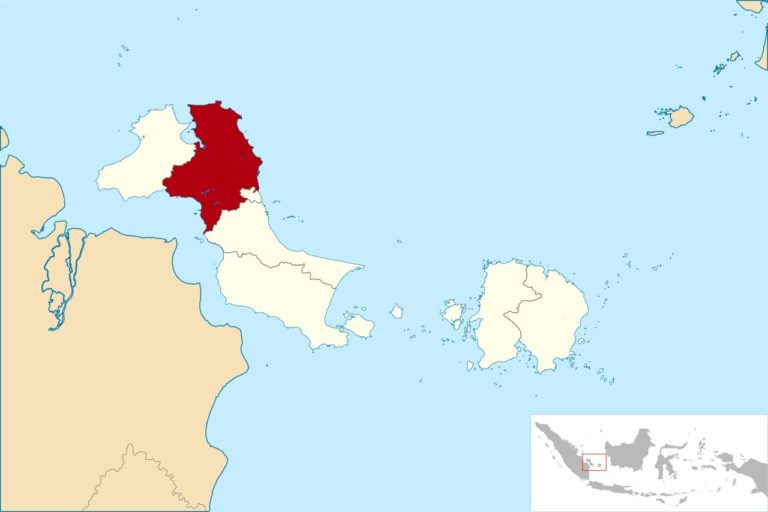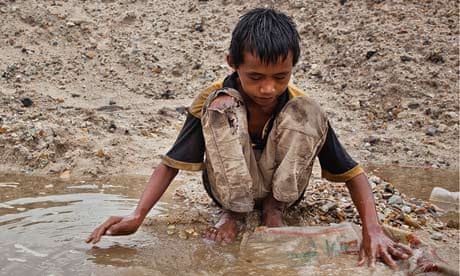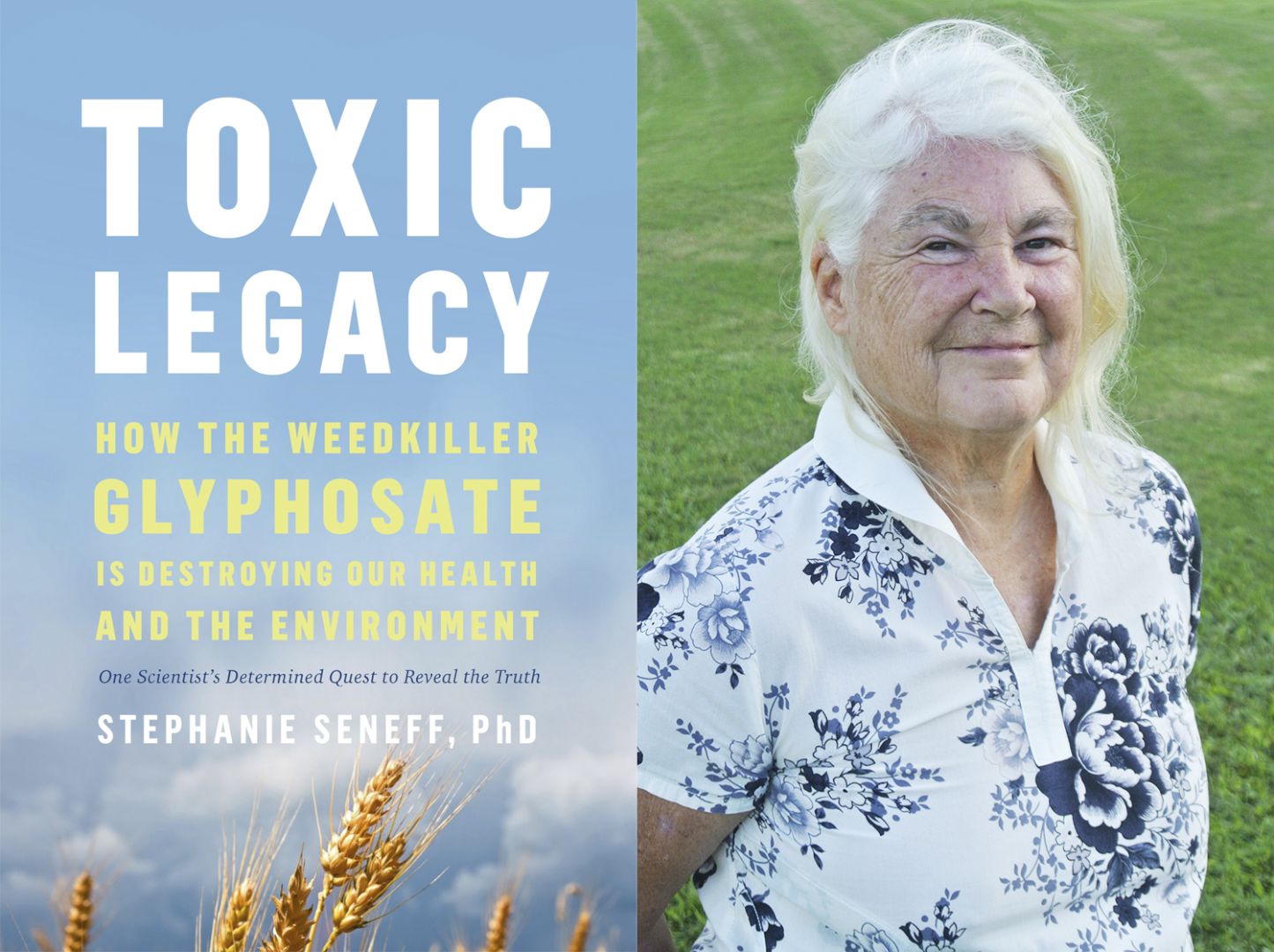
Acquittal of Indonesian villagers protesting pollution marks rare win against SLAPP
- An Indonesian court has acquitted six villagers on the island of Bangka in a criminal case widely seen as an attempt to silence them by a company accused of polluting their village.
- Experts say the court ruling sets a precedent for future cases where environmental defenders are being censored, intimated and silenced through so-called SLAPP (strategic lawsuit against public participation) litigation.
- The villagers have since 2017 been fighting against a tapioca company, PT Bangka Asindo Agri, that operates near their community and produces waste that emits a pungent stench.
- The environment ministry has launched an investigation into the case and filed its own lawsuit against the company for unpermitted pollution; the company denies the charge and has lobbied parliament to intervene with the ministry to drop the case.
This article originally appeared in Mongabay.
Featured image: The map of Bangka in Indonesia. Image courtesy of Ewesewes/Indonesian Wikipedia.
JAKARTA — A court in Indonesia has acquitted six villagers in a dispute against a tapioca factory, ruling that the criminal charges, allegedly brought at the behest of the company, were frivolous and could not be used to silence criticism of environmental violations.
Experts have hailed the ruling as unprecedented, as it marks the first time in Indonesia’s legal history in which a court has thrown out litigation considered a form of “strategic lawsuit against public participation” or SLAPP.
SLAPP typically describes any kind of litigation with little to no merit that’s brought with the aim of censoring, intimidating or silencing critics speaking out against those in power or on issues of public interest.
This particular case revolves around a conflict between villagers on Bangka Island, off the southeast coast of Sumatra, and a tapioca flour mill operated by PT Bangka Asindo Agri (BAA).
Since the company began operating in 2017, residents of the village of Kenanga have complained about the pungent stench coming from the waste churned out by the nearby mill. Heti Rukmana, 29, whose house is 700 meters, or less than half a mile, from the factory, said the smell was so foul and intense that she had trouble breathing.
“Whenever the rotten stench comes, I feel nauseous and want to throw up,” she told Mongabay. “My first child had a problem in her lungs when she was born. So whenever there’s a foul smell, I take my daughter to her room and close the door. I’m scared that she’ll suffocate.”
After repeatedly failing to get the company to address the issue, the villagers prepared to bring a class-action lawsuit in May 2020. Spearheading that move were six villagers, including Heti, who served as neighborhood unit chiefs at the time.
In June 2020, the six villagers were reported by a local to the police for organizing a meeting to discuss the plan, on the grounds that they were no longer serving as neighborhood unit heads by then.
Prosecutors then brought the case to a district court in Sungailiat, the Bangka district seat, charging the villagers with impersonating officials.
Lawyers representing the villagers tried to get the court to dismiss the case by arguing that the organizing of the meeting was an act to defend the residents’ rights to clean air and a healthy environment. This right is enshrined in the 2009 Environmental Protection and Management Law, which states that no criminal charges may be brought against anyone for campaigning for their right to a clean environment. The article is commonly referred as an anti-SLAPP measure to thwart malicious lawsuits.
Nevertheless, the court proceeded to rule the six villagers guilty of the impersonation charge, arguing that their crime wasn’t related to the residents’ fight for a clean environment. The court sentenced them to a month in prison, prompting them to file an appeal with the provincial high court.
At the high court, the judges agreed with the villagers, saying their right to fight for a clean environment is protected under the 2009 environmental protection law and thus they can’t face criminal charges for exercising that right. The high court subsequently overturned the district court’s ruling, acquitting Heti and the five other former neighborhood unit chiefs.
“The defendants’ actions were merely to give the public [an opportunity to] participate in the public interest on the effect of pollution in the form of smell caused by the production activities of PT BAA,” the high court judges said in their verdict.
Monumental
The legal victory for the six villagers is monumental as it is the first time an Indonesian court has ruled in favor of environmental defenders by using the anti-SLAPP article in a criminal case.
But the case should never have gotten as far as the high court, and the villagers should never have been jailed in the first place if police investigators and prosecutors had acknowledged early on that the charges were malicious and frivolous, according to the Indonesian Center for Environmental Law (ICEL), an NGO.
As such, this verdict should serve as a stepping stone toward better protection for communities and activities against SLAPP, ICEL executive director Raynaldo Sembiring said. A stand-alone regulation and law would provide that stronger protection, he added.
“The anti-SLAPP mechanism is not strong yet because we don’t have regulations or policies that could be implemented, except for the anti-SLAPP article [in the 2009 environmental protection law],” Raynaldo said. “So we could start discussing the opportunity to have an anti-SLAPP law.”
Such a law would provide a stronger guarantee for public participation, protection and remedy, and clearer authority for law enforcers to stop SLAPP cases as early as possible.
But the prospects of passing such a law are weak, given parliament’s track record of stalling legislation aimed at protecting public interests, versus its zeal for fast-tracking controversial bills aimed at environmental deregulation in favor of business interests.
“Therefore, we hope that the government could draft an implementing regulation for the anti-SLAPP article as soon as possible, possibly in the form of a ministerial regulation,” Raynaldo said.
However, even without having stand-alone regulations in place, law enforcers are actually able to stop SLAPP cases before they go to court, since a mechanism to end investigations and prosecutions already exists in the country’s Criminal Code.
“This is also an important moment for investigators to coordinate with ministers, the Attorney General’s Office and the police,” Raynaldo said. “These institutions can build communication and stop [SLAPP] cases as early as possible.
“In the past, it might have been difficult because there were no rulings that used the anti-SLAPP article,” he added. “That’s why this ruling should be a stepping stone to be replicated [in future cases].”
Irregularities
Muhnur Satyaprabu, a lawyer for the six Kenanga villagers, said the district court’s guilty verdict is an example of how local communities are fighting an uphill battle against polluters and law enforcers who often side with corporate interests.
He said there were irregularities throughout the legal process, with the lawyers denied the right to present supplemental evidence, on the grounds that the new evidence hadn’t been entered into the court dossier. Yet the district court judges allowed prosecutors to present additional witnesses who also were not listed in the dossier.
Muhnur also pointed to irregularities in how the police dealt with the case, particularly the detention of the six villagers: Heti was two months pregnant at the time, and another of the villagers was recovering from a stroke.
Heti said she was placed in a cell block with 39 male inmates. After eight days in the police’s detention center, the six villagers were transferred to a larger prison, where they spent another 14 days.
During her time there, Heti said she asked the warden whether she could spend time outdoor to get some sunshine for the health of her fetus.
“But I wasn’t allowed,” she said. “So [I spent] 18 days in a closed room, with no sunlight at all. I slept on a tiled floor with no mat.”
Heti said the villagers were also intimidated during their time in prison to dismiss their lawyers — something that Heti vehemently opposed. She added didn’t feel scared because she knew she hadn’t done anything wrong.
“But I did miss my family because I have a 2-year-old daughter,” she said. “And I felt disappointed because the person who reported us [to the police] was our own neighbor, instead of the company. So we’re being pitted against each other [by the company].”
Heti said she believed BAA was be behind the lawsuit, regardless of the fact that it was her neighbor who reported them to the police. For one thing, she said, when police were interrogating them, one of the investigators said they could be released if they just apologized to the company.
“The police officer himself said, ‘You disturbed the company, you disturbed people with money. If you want this case to end, go ahead and apologize to the company,’” Heti said.
She said she was also approached by police and state security officers three times prior to being reported to the police. On each occasion, she said, they told her to stop speaking out against BAA. They offered her 50 million rupiah ($3,500) and a used car in exchange for her silence, Heti added.
She said there was no way she would sell out her village for an old car.
“I just wanted the waste to stop [polluting my village],” Heti said.
BAA has denied allegations that it was behind the lawsuit.
“We see that there’s an effort to link this [case] with PT BAA,” the company’s lawyer, Arifin Joshua Sitorus, said during a hearing before parliament on April 7. “But actually there’s no connection between the case and PT BAA.”
Muhnur said all the irregularities highlighted in the case point to abuses of power, and therefore strengthen suspicions that the villagers are being criminalized for standing up against the company.
“The lesson here is that abuse of power at the local level is rampant, especially when it comes to environmental defenders,” he said. “They’re very prone to criminalization. Their protection is not strong because the media and the civil society are not strong enough.”
Investigation
Arifin, however, said it was BAA that was the victim of criminalization in this case, since the environment ministry filed a lawsuit in March against the company for unpermitted pollution.
He said the lawsuit should have been a last legal resort, after other forms of punishment, such as administrative sanctions.
“[But the ministry] had never given [BAA] administrative sanctions [before the lawsuit], and law enforcement suddenly came out of nowhere,” Arifin said. “This is what we perceive as an effort to criminalize [BAA].”
The environment ministry’s law enforcement chief, Rasio Ridho Sani, said the government was entitled to file a lawsuit against a polluter if their activities had caused an impact, as in the case of BAA.
Arifin denied that BAA had polluted the environment, saying the company has the best wastewater management system of the five tapioca factories operating in Bangka. Firdianto, BAA’s owner and president, said the factory’s operations had indeed produced a pungent smell in the first two years, but that subsequent treatment of the liquid waste had put an end to the smell.
“[In] 2019, [the smell] was practically completely gone,” Firdianto said at April’s parliamentary hearing. “All of our waste has met [regulatory] standards.”
Heti, though, said the smell is still there, even though it comes and goes depending on the direction of the wind, and is not as intense as when the factory started operating.
The environment ministry also found during its investigation in 2020 that the level of methanethiol — a colorless, flammable gas with the distinctly putrid odor of rotten eggs — produced by the factory exceeded regulatory limits.
Darori Wonodipuro, a lawmaker from the Gerindra party who paid an impromptu visit to the factory in November 2020, said the smell was so strong that he could barely stand it.
“Ten minutes [there] and we were already asking to go home because [we] couldn’t stand the smell,” he said during the hearing with the BAA representatives.
Arifin, the company’s lawyer, called on parliament to intervene and stop the environment ministry’s investigation, which he called “thick with arrogance.”
Darori said parliament should not interfere with the ministry’s legal efforts, adding the case should be settled in court.
This is not the first time BAA has sought protection against the environment ministry’s probe and lawsuit. Rasio, the ministry’s enforcement head, said BAA has been resisting efforts to investigate the factory’s operations. He said the company had failed to make officials available for questioning whenever the ministry summoned them.
Instead of cooperating in the investigation, the company sent letters in May 2020 to various government institutions, including the president, the state intelligence agency, the police and the Attorney General’s Office, accusing the environment ministry of criminalizing BAA, according to Rasio.
And the company also refused to sign the minutes drawn up by the ministry after inspectors had conducted a field investigation, he added.
“We have handled so many cases, thousands of them, but this resistance by PT BAA is not right,” Rasio said. “They should just explain the matter to us.”
Rasio added the ministry would proceed with its case despite the company’s belligerence.
Heti said the Kenanga villagers would also continue with their fight, even though some of them are still fearful of ending up in jail.
“We won’t back off. I myself am still posting news [about the smell] on social media,” she said. “People should realize that this company is not right. Instead of working on its waste [management], we were pitted against each other and against law enforcers. So we have to fight.”



![Life and Lithium at Thacker Pass [Dispatches from Thacker Pass]](https://dgrnewsservice.org/wp-content/uploads/sites/18/2021/07/2729591-840x675-1.jpg)


